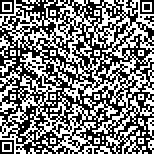| 摘要: |
| 环境条件变化是造成贝类挥发性有机物质(VOCs)组成变化的主要原因。菲律宾蛤仔养殖生产中,常进行从开放式自然滩涂迁移至人工围塘养殖的活动。本文研究了这一过程前后菲律宾蛤仔(Ruditapes philippinarum)肌肉组织的VOCs组成特征、变化及其与环境因子相关性。结果显示:基于固相微萃取和气质联用技术,共鉴定出52种VOCs,分别属于醛、醇、酯、烃、呋喃、烷烃、烯、芳香烃、含硫和含氮化合物等。迁移前样本中,检出41种化合物,迁移至人工围塘养殖20 d后,检出32种。迁移造成了化合物种类数量降低、种类发生变化。醛、醇类的相对含量最高、迁移前后的变化尤为显著,呈现由醛高醇低的组成逆转为醇高醛低的特点。溶氧是影响VOCs组成变化及其醇、醛类差别的重要因子。饵料生物量、相对丰度和多样性与VOCs的组成具有显著相关性:自然滩涂微型真核生物多样性高但生物量和丰度相对低,人工围塘多样性低但生物量和丰度高,是VOCs组成差异的关键影响因子。本研究建立了贝类VOCs与关键环境因子的直接联系,为进一步解析贝类品质的环境关系、优化和调控养殖环境等研究提供了参考。 |
| 关键词: 菲律宾蛤仔 挥发性有机物 环境因子 微型浮游生物 养殖迁移 |
| DOI:10.11759/hykx20220224002 |
| 分类号: |
| 基金项目:国家重点研发计划专项课题(2018YFD0900702);国家贝类产业技术体系(CARS-49) |
|
| Effect of aquaculture site transfer on the composition of volatile organic compounds in Ruditapes philippinarum |
|
YANG Ling1, GUO He2, XU Zhi-hui2, SHAO Qian-wen3, RAN Zhao-shou2, ZHOU Cheng-xu1
|
|
1.College of Food and Pharmaceutical Sciences, Ningbo University, Ningbo 315211, China;2.College of Marine Science, Ningbo University, Ningbo 315211, China;3.Ningbo Institute of Oceanography, Ningbo 315832, China
|
| Abstract: |
| Environmental factors play critical roles in creating volatile organic compounds (VOCs). In the present study, sampling was conducted during transfer activity at a Manila clam (Ruditapes philippinarum) aquaculture site. The muscle tissue of the clams was used to analyze how VOCs changed and to what extent they were affected by environmental factors. Fifty-two VOCs were identified in the muscle samples by headspace solid-phase micro-extraction/gas chromatography-mass spectrometry. The VOCs were mainly aldehydes, alcohols, ester hydrocarbons, furans, alkanes, alkenes, aromatic hydrocarbons, and sulfur-containing and nitrogen-containing compounds. Forty-one VOCs in the samples were detected from the natural tidal flats. Thirty-two VOCs were detected ~20 d after transferring the clams to an enclosed aquaculture pond. The diversity and types of VOCs changed because of the site transfer. The relative amounts of aldehydes and alcohols were the highest in both groups of samples, and these two compound types varied significantly. The relative amount of aldehydes was higher than that of alcohols in samples from the natural tidal flats. This relationship was reversed after the 20-d culture period (the relative amount of alcohols became higher than that of aldehydes). Dissolved oxygen was the main factor. The abundance and biodiversity of microeukaryotic plankton were significantly correlated with the VOC composition. The biodiversity of the microorganisms was relatively higher in the natural tidal flats, whereas biomass and relative abundance were relatively lower. The abundance was relatively high, but biodiversity was relatively low in the enclosed aquaculture ponds. This study established direct associations between critical environmental factors and the VOC composition of Manila clams. This study provides a reference to further research the mechanism of the correlations and optimize the aquaculture management of Manila clams. |
| Key words: Ruditapes philippinarum volatile organic compounds environmental factors microeukaryotic plankton aquaculture site transfer |
